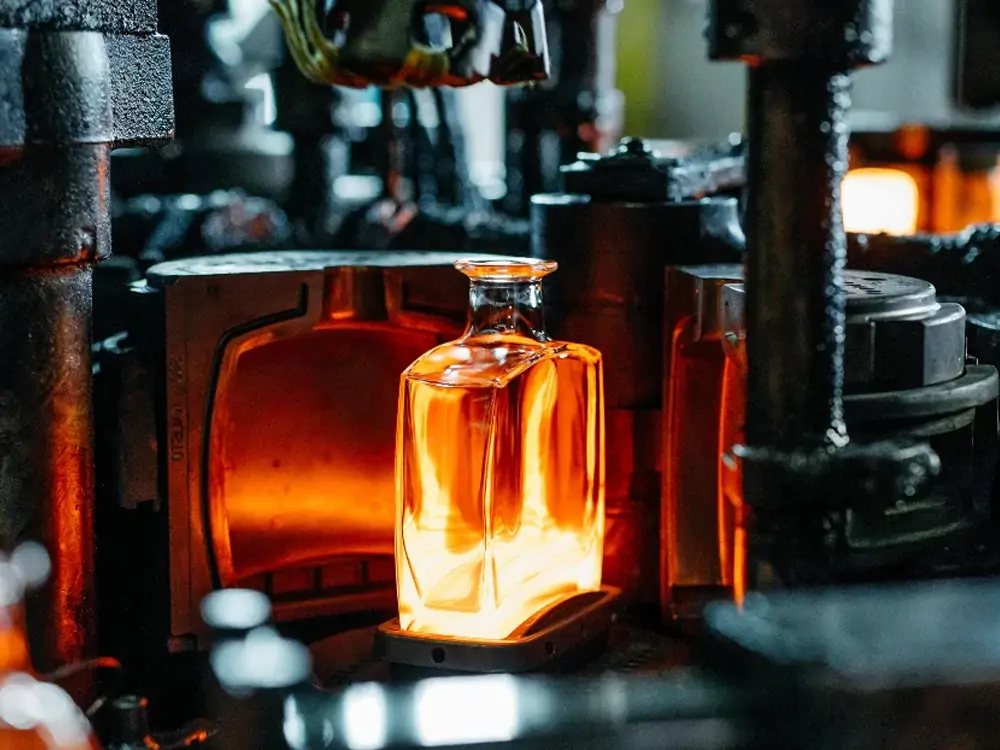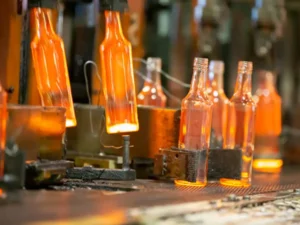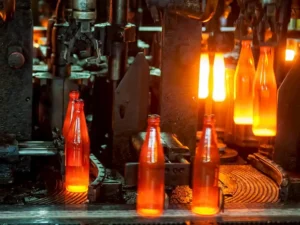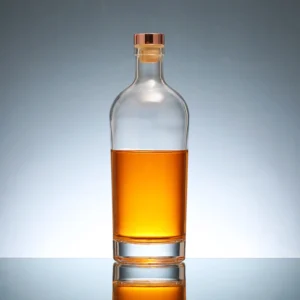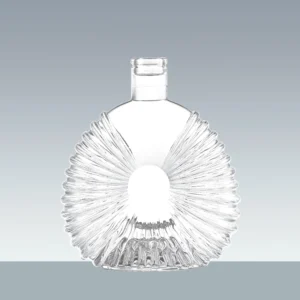Whisky bottles sizes in the world! It’s a fascinating topic, indeed. Whiskey bottles have several…
How Are Glass Bottles Made?
Contents
hide
Introduction:
How are glass bottles made? It is often asked out of curiosity. Well, many people need guidance regarding the manufacturing process of glass bottles. Therefore, this blog is a complete guide to making glass bottles. Let’s begin with it now.
How are glass bottles made?
A glass bottle is ubiquitous to see nowadays. You would agree that almost all kinds of beverages, sauces, and liquor comes in similar packaging. What do you think is why many brands select this type of packing? This selection was made because these bottles offer elegance. Although these are common everywhere, do you want to know the manufacturing process? If yes, then you will find the details below.
The process seems easier but involves many technologies. Also, a single glass bottle undergoes many inspections and quality tests. The complete procedure of how is a glass bottle made.
How to make glass bottles? You will find the entire process described in different segments. Go through each part, and things will become apparent to you.
1. The selection of raw material
The first part of the glass bottle manufacturing process starts with the raw material. You will therefore come across many raw materials. For example, the raw materials are the following.
- Soda ash
- Silica sand
- Soda-lime
- Limestone
- Borax
- Sodium carbonate
- Barium
The strength of glass depends on the type of material you choose. For better quality, the manufacturers choose high-quality material that offers the bottle good strength. To learn about how to make a glass bottle, then read ahead. The primary raw material is soda lime and silica sand. The purpose of adding soda is to reduce the melting point of sand. In addition, lime is an agent for making the glass shiny and robust. You can also consider that the strength of the final product, glass depends upon the addition of silica in it.
2. Preparing for the batch
How are glass bottles made? It would take you to the batch segment. In industries, there are large containers that hold the raw materials together. When the raw materials come, they weigh and scale them according to the requirement. Usually, the manufacturers have large scales to determine the exact weight and quantity of the material. They cannot take any risk because of the wrong measurements.
Then, they mix all of the ingredients. It is not a manual mixing. Instead, they have huge machinery that allows the ingredients to mix thoroughly. Similarly, the rotation motors run continuously.
The grinding step is the further step for how glass bottles are made. After mixing, they add the ingredients to the grinding machine. The machines have huge sizes. What do you think? What do they add to it? The first thing manufacturers add to the grinder is the raw materials. The next thing is the cullet. Many of you would need to learn cullet, so explain it. The cullet is called recycled and broken pieces of glass.
Afterward, they add decolorizers. It contains a chemical compound made from magnesium and oxygen. So, what does it mean? It removes the green or colored pigmentation in the glass. Also, it eliminates the impurities found in the mixture. Usually, they find iron traces. Hence, it removes that too. The fragments of impurities cause the glass bottle to result in poor quality.
These ingredients are added in specific ratios. The experienced staff sets the ratios. The final part is to mix the ingredients thoroughly. The grinding machine excellently performs this job.
Your mixture is ready to be fed in the hot kiln.
3. Melting process in the hot kiln
How are glass bottles made? It would always make you think of the manufacturing plant’s blazing hot kiln or furnace. The plants have large furnaces that keep burning the entire day. It would have a temperature between 1000 to 2000 degree Celsius, and it’s unbelievable. The mixture that was ready after grinding is fed into the hot furnaces.
The glass bottle manufacturing process then takes to the melting process. In the furnaces, the manufacturers fed in the solid mixture. As the furnace is blazing hot, it would immediately melt the mix into a runny, liquid form. Remember, the raw material completely changed to liquid at this stage. Hence, it should attain the right consistency and not contain bubbles. Such instructions are necessary because the next stage is molding. If the mixture isn’t uniform, then it might not fit in the mold properly. Hence, the final product would turn out poorly.
4. Filing the mixture in the molds
How are glass bottles manufactured? Consider the following step. The real story of glass bottle manufacturing starts here! The glass bottle you see in the market comes through this stage. The molten raw material flows directly into the glass containers. The containers have a particular shape, just like the bottles you see in the market. The manufacturers install chambers that ensure the flow of molten raw material is possible.
However, they have stringent measurements there. For example, they strictly measure the flow, thickness, quantity, and temperature. So the mixture then enters the glass bottle mold to get the right shape and form. Similarly, a hot air blower always blows hot air to achieve the bottle shape. The inspection team monitors and inspects the condition of the bottle. If they find any defect in the form, the defective bottle returns, and the cycle repeats.
After the bottle gets the exact shape you require, they remove it from the mold. Similarly, if you need to add any variations to their shape, you can easily achieve that. The glass bottle shape forms immediately. If you delay adding the variations, then it becomes hard. So, you have to repeat the process.
5. The annealing process
At this stage, manufacturers take out the glass from the manufacturing unit. The process of annealing is very crucial for the glass bottle manufacturing process. During the process, the hot glass is cooled as heat is eliminated. Hence, it allows the glass to get its required shape. Also, it prevents the formation of crystals and bubbles.
Usually, the glass’s stress makes the glass deform its characteristic properties. It happens when the temperature of the outer surface is much cooler than the inner surface. The annealing process would cool down the temperature of both sides. Hence, the glass gets a refined and crack-free texture.
6. Coat the glass
How are glass bottles made? It is a query that makes you question the ending process of glass bottle production. The manufacturers do a laminated coating on the glass bottles. See how it works. They use tin oxide for layering the outer hot side of the bottles. Similarly, they might use other materials for the coating purpose too. The coating helps the glass bottle surface to stick together.
Another benefit of this coating is to prevent the sticking of glass bottles with one another on the conveyer belt. Hence, the coating prevents that from happening. It gives the glass bottles a strength element too.
7. Inspecting the glass bottles
You already know the significance of inspecting a final product. Manufacturers cannot directly put glass bottles on production lines when the bottles undergo processing. These bottles need a detailed inspection. How do they inspect and examine the glass bottles? Well, it requires both manual and automatic checks. You never know the defects present in the bottles you use.
Glass is a delicate material; hence it can quickly get cracks and leakages. Inspection is necessary to identify the cracks in the glass. It will prevent the glass bottles from leaking. The correct information regarding a specific mold number could result in better communication. So, glass bottles must pass stringent quality checks before they can be sold. The glass bottles have to pass specific protocols also.
If they found a bottle couldn’t pass the quality test, they rejected it.
8. Custom designing
The custom-made feature helps the clients to get the bottle in the required sizes and shapes.
9. Labeling and printing
The final processing of the glass bottles includes printing and labeling stuff. The labeling consists of the name of the manufacturer, quality test pass label, etc. Similarly, printing is a vast category. Usually, the name you see on the glass bottle printed on the glass is a type of printing. Hence, it makes sure that the product is original and not fake. Clients often ask the manufacturers to design the bottles according to their requirements.
10. Packing process
When a glass bottle passes the quality inspection, it moves to the packing unit. Here, the bottles get their final look. For instance, most manufacturers place the bottles in corrugated and cardboard packaging. It makes sure the bottles don’t collide with one another. The upper packaging is not wooden; it is another plastic material. It provides bottles, heat, and water-resistant packing.
Similarly, such type of packaging is quite feasible to handle and carry. Lastly, the boxes get accurate labeling. For example, they mention the item number, quantity, handle instructions, etc., on the front panel.
How much does it cost to manufacture a glass bottle, then the cost depends on various factors. Usually, it changes according to the customizations.
Conclusion:
How are glass bottles made? It is something you would always get curious about. The process is simple but requires some technical steps and settings. Also, you can get the bottles in a personalized way, just like you want.

